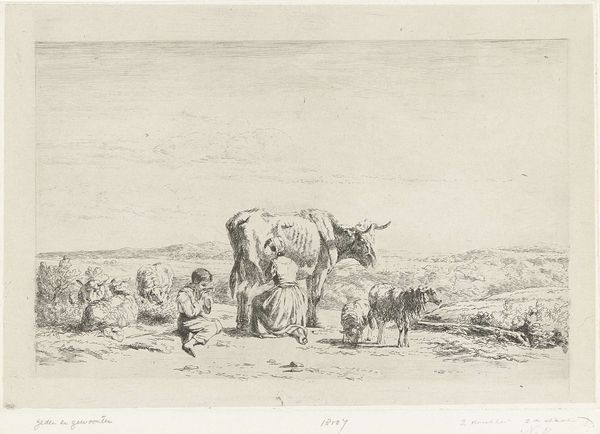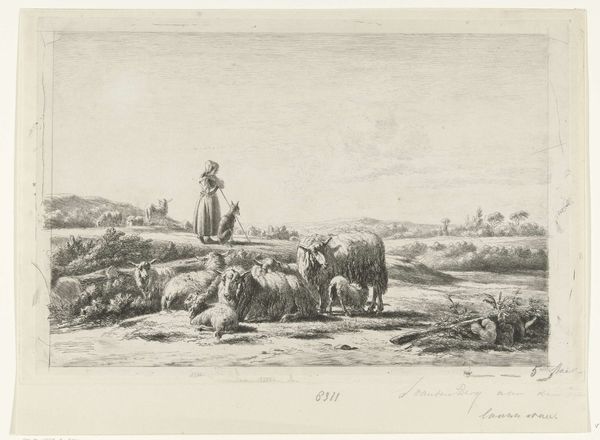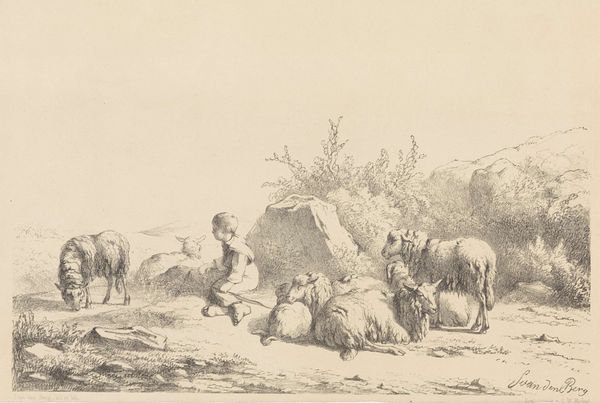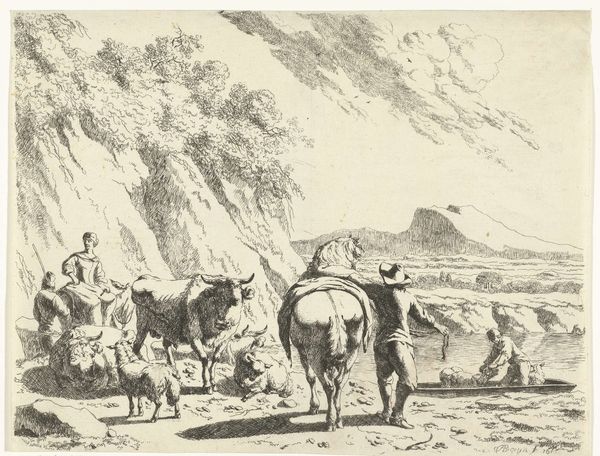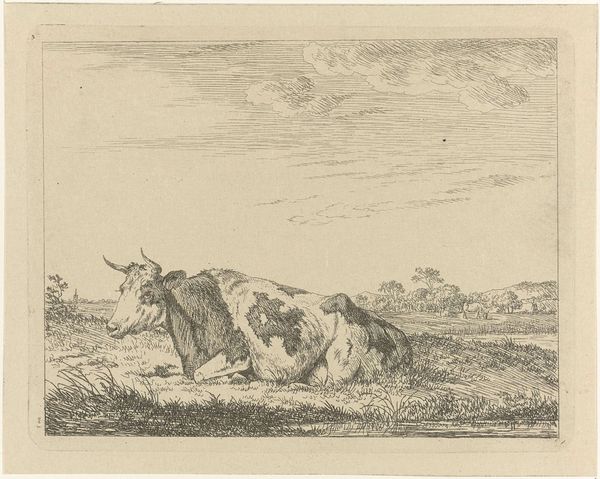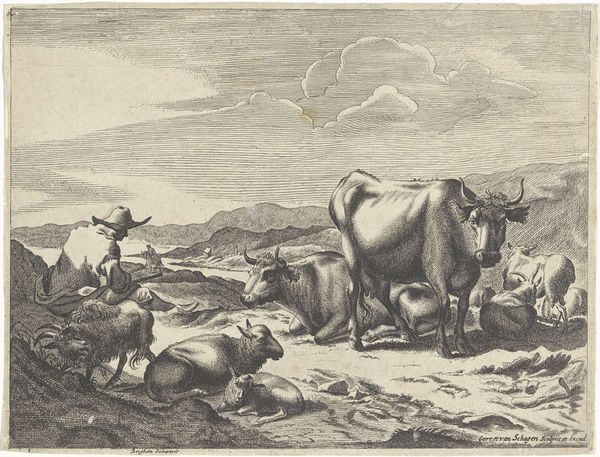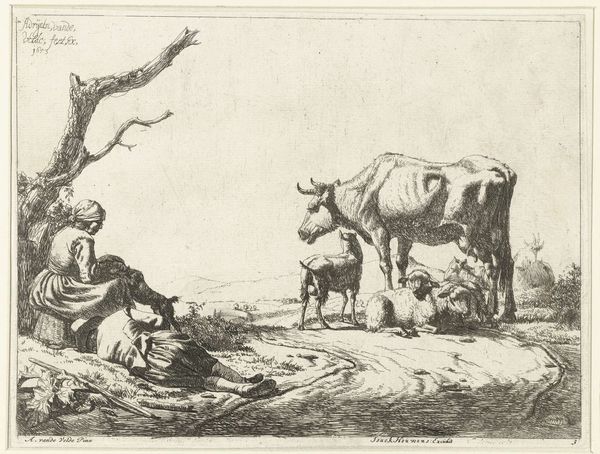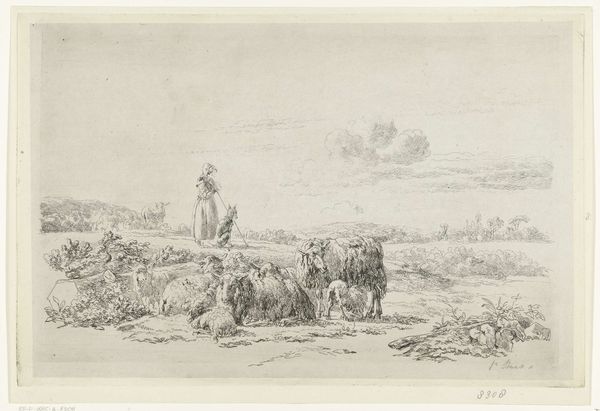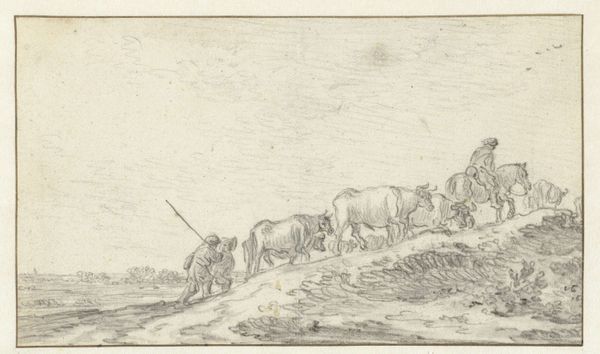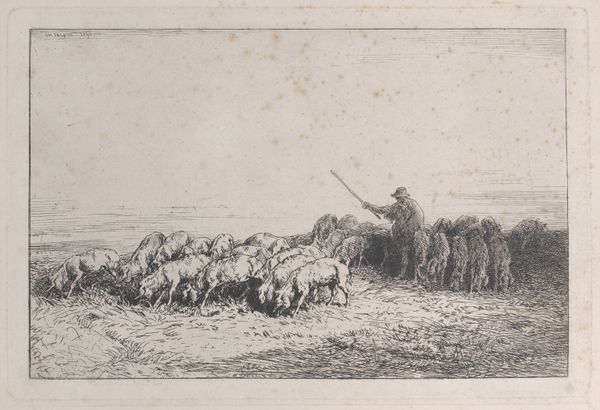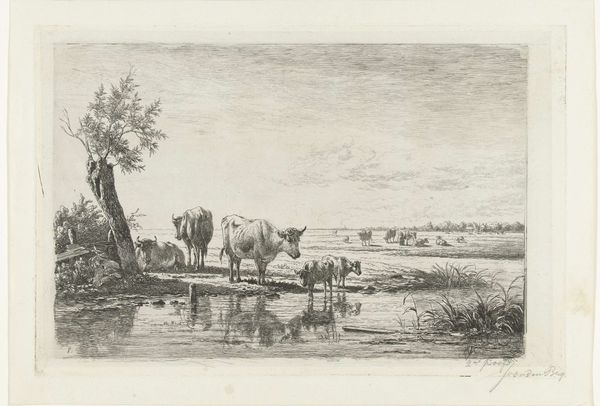
Landschap met vrouw die koe melkt en jongen met schapen 1822 - 1893
0:00
0:00
drawing, graphite
#
portrait
#
drawing
#
landscape
#
pencil drawing
#
graphite
#
genre-painting
#
realism
Dimensions: height 211 mm, width 310 mm
Copyright: Rijks Museum: Open Domain
This landscape with a woman milking a cow and a boy with sheep was made by Simon van den Berg. The artwork’s fine lines and muted tones are achieved through etching, a printmaking technique dating back to the 16th century. The etching process involves covering a metal plate with a waxy, acid-resistant layer, then drawing through it with a needle. The plate is then immersed in acid, which bites into the exposed lines, creating grooves. Ink is applied, the surface wiped clean, and the image is transferred to paper under pressure. Etchings like this one often represented an idealized, romantic view of rural life, but were also affordable, which made them accessible to a wide audience. The labor-intensive process of etching contrasts with the image's subject matter, inviting reflection on the relationship between urban and rural experience, and the labor of making art versus agricultural work. So, next time you encounter an etching, consider both the scene it depicts and the skilled craft involved in bringing it to life. By understanding the materials, making, and social context, we can fully appreciate the skill of the artist.
Comments
No comments
Be the first to comment and join the conversation on the ultimate creative platform.
